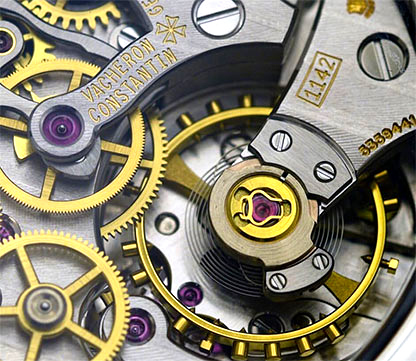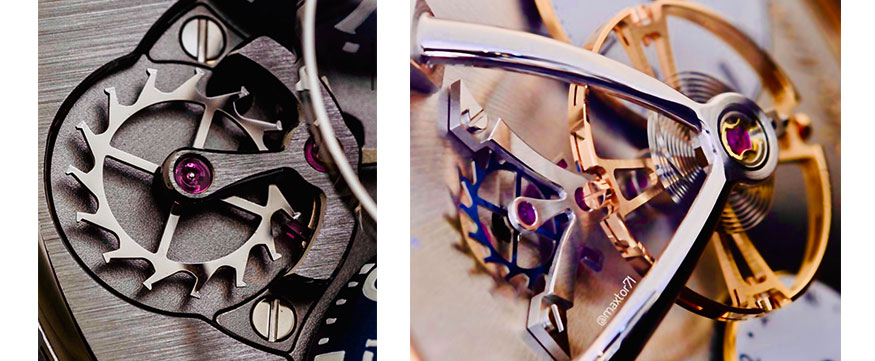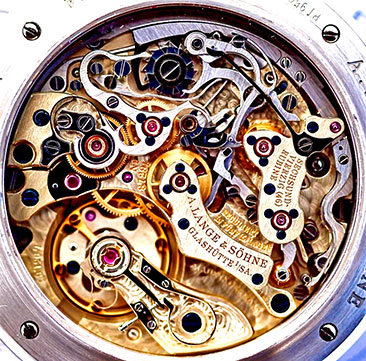Tick - Talk
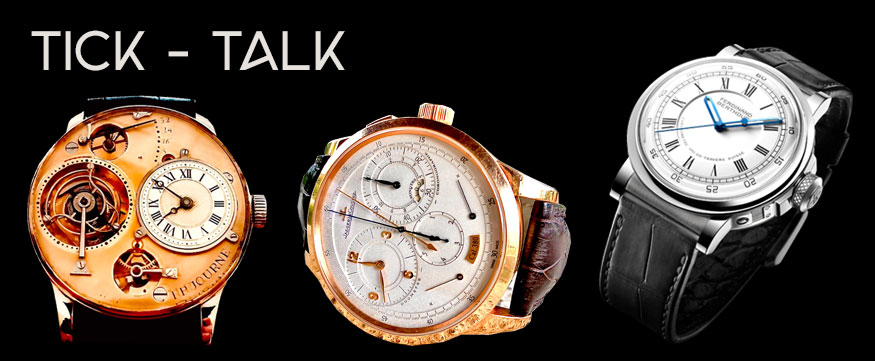
The ideas that went into creating influential watches and how they function have always inspired me. So, here's my attempt to take you through a crash course on how a simple mechanical watch works.
The Parts of a Basic Mechanical Hand Wound Watch and their Functions
The Mainspring Barrel
This is where the power of a watch is stored. When you wind a watch through the crown, you essentially wind a spring that is the power centre of the watch and the mainspring barrel.
Gear Train
A series of gears that transmit power from the mainspring barrel to the escapement.
A segment of the beautifully crafted Vacheron Constantin Historiques Cornes De Vache 1955 gear train. Image Credit: @maxtor71
The Escapement
The Escapement is the heart of a watch. It comprises the escape wheel, the pallet fork, the balance wheel and the balance spring.
The escape wheel features teeth on its circumference, which engage the pallet fork. The pallet fork in turn impels the balance wheel and balance spring. The spiral balance spring beats, while the balance wheel oscillates to regulate the movement.
Escape wheel sitting below the balance wheel of the MB&F10. Image Credit: @maxtor71
Energy from the mainspring barrel is transferred down the gear train to the escapement. This, in turn, regulates the torque to drive the hour, minute and second hands respectively, for the accurate measurement of time.
Going one step further, featuring a multiplicity of gears, levers, bridges, wheels and more in one of the greatest movements the world of horology has ever seen in the Lange 1815 Chronograph. Image credit: @langepedia
The mainspring barrel contains a spiral torsion spring which powers the watch. As the spring unwinds over time, the power going down the gear train reduces and finally stops - bringing the hands of the watch to a standstill. The inaccurate display of time as a result of reducing torque from an unwinding mainspring barrel was a challenge watchmakers faced for a very long time.
Traditionally, an acceptable level of accuracy was achieved by use of the lever escapement. The process was further refined by the invention of a mechanism called The Constant Force Escapement.
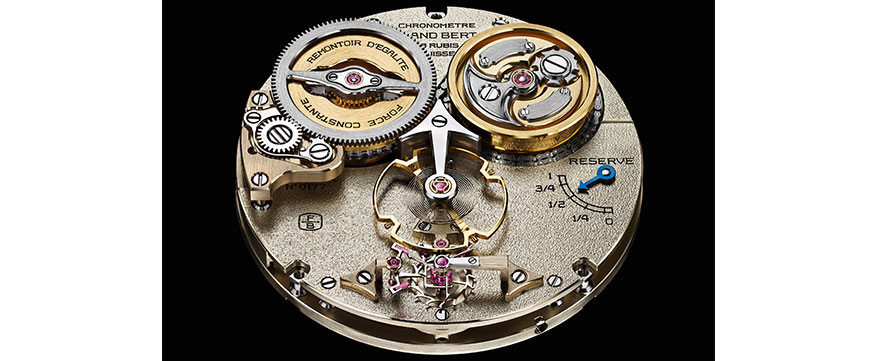
The Ferdinand Berthoud FB2RE movement clearly showcases all of the above parts - the Mainspring Barrel positioned at 2 o’clock. The balance wheel at the centre and below it the Escape wheel triggered by the Pallet fork on its left at 6 o’clock.
One of my favourite watches featuring a recent iteration of the Constant Force Escapement is featured in part two of this blog.

